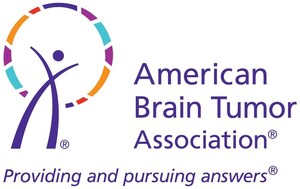American Brain Tumor Association Applauds the World Health Organization's New Integrated Classification for Brain and Central Nervous System Tumors
ABTA's National Patient and Family Conference in Chicago will help patients, their caregivers and families understand the implications of the WHO classification
CHICAGO, May 12, 2016 /PRNewswire-USNewswire/ -- The American Brain Tumor Association (ABTA) applauds the World Health Organization's (WHO) International Agency for Research on Cancer (IARC) for the release of its revised classification of central nervous system tumors. The tumor classifications now combine genetic information of the tumor in conjunction with histology (the way the tumor looks under a microscope), which will "fine tune" the diagnosis and treatment of brain tumors.
"This is a significant step forward for the brain tumor scientific, medical and patient community as it brings us into the next era of brain tumor diagnosis and treatment," said Nicole Willmarth, Ph.D., chief science officer, American Brain Tumor Association. "The updated WHO classification of CNS tumors paves a clearer path to more precise, individualized tumor diagnoses, which will lead to more accurate determinations of prognosis and treatment outcomes for brain tumor patients."
A collaboration of 117 experts from 20 different countries contributed to the newly integrated guidelines for classifying primary brain and central nervous system tumors. This update is grounded in nearly 20 years of research showing the need for genetic information for both common and rare brain tumors.
Among the 25 major changes identified, key updates include an expanded classification for glioblastomas based on IDH mutation and moving away from the use of "oligoastrocytoma," or mixed glioma, which can now be classified more accurately as an astrocytoma or oligodendroglioma due to genetic testing. Additional changes are found in the 2016 World Health Organization Classification of Tumors of the Central Nervous System summary.
"The update of the WHO classification of central nervous system tumors is exciting because new types are being incorporated on the basis of molecular findings, which can be more objective and definitive," said Kenneth Aldape, M.D., Princes Margaret Cancer Centre, Toronto General Hospital. "This is a first step in combining long-established approaches with new and important genomic biomarkers into the classification of brain and spinal cord tumors."
Dr. Kenneth Aldape will present on the implications of the new WHO classifications for brain tumor patients, caregivers and their families at the ABTA's National Patient and Family Conference in Chicago, July 29-30, 2016, at the Westin O'Hare Hotel. Online registration for the conference is currently available at www.braintumorconference.org.
The 2016 World Health Organization Classification of Tumors of the Central Nervous System is an update of the 2007 4th edition reference Blue Book, which acts as a guide for oncologists and pathologists to monitor tumor response of therapy and clinical outcome. An 18-page summary of the 2016 CNS WHO classifications is published in the journal Acta Neuropathologica.
About the American Brain Tumor Association
Founded in 1973, the American Brain Tumor Association was first and is the only national advocacy organization committed to funding brain tumor research and providing education and information for all tumor types and all age groups. For more information, visit www.abta.org or call 800-886-ABTA (2282).
Media Contact:
Phung Tran
773-577-8792
[email protected]
Logo - http://photos.prnewswire.com/prnh/20150901/262855LOGO
SOURCE American Brain Tumor Association
Related Links
WANT YOUR COMPANY'S NEWS FEATURED ON PRNEWSWIRE.COM?
Newsrooms &
Influencers
Digital Media
Outlets
Journalists
Opted In




Share this article